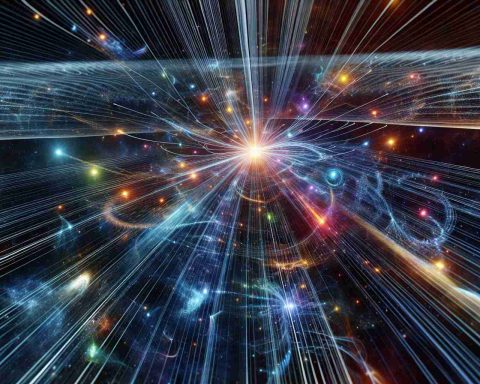- Two unfinished nuclear reactors in Jenkinsville, SC, symbolize both ambition and challenges.
- Santee Cooper is actively seeking developers to revive the stalled project.
- The reactors could generate 2,200 megawatts of energy, critical for rising energy demands.
- Renewed interest in nuclear energy is driven by clean power needs from tech sectors.
- Past failures, including construction halts and contractor issues, leave stakeholders cautious.
- Experts argue that existing investments could pave the way for a successful revival.
- The potential restart of the reactors raises questions about risks vs. benefits for South Carolina’s future energy landscape.
Just off the dusty roads of Jenkinsville, South Carolina, two half-built nuclear reactors tell a story of ambition, setbacks, and a potential resurgence. These reactors, intended to boost energy for years, have remained dormant since 2017, leaving customers to foot a staggering $9 billion bill. Now, Santee Cooper is making waves with plans to seek developers willing to resurrect this controversial project.
The call for proposals comes at a time of “renewed interest” in nuclear energy, with a spotlight on advanced manufacturing and booming tech industries clamoring for clean power. If these units are completed, they could unleash 2,200 megawatts of energy—enough to illuminate hundreds of thousands of homes.
However, the road to revival is not without challenges. Previous failed attempts left the state wary; after halting construction amid significant delays and contractor bankruptcy, the stakes are high. Yet, with projected energy demands soaring, particularly from ever-expanding data centers fueled by AI and cloud technology, the pressure is on to find sustainable solutions.
Experts and state legislators are advocating for a revival, arguing that the existing foundation offers a unique head start. While the push to complete V.C. Summer poses risks, it also represents a chance to utilize the vast sums already invested.
As South Carolina stands on the brink of a potential energy revolution, the question looms large: could restarting V.C. Summer be the breakthrough the state desperately needs, or a gamble that risks millions more? The future of energy in the Palmetto State hangs in the balance.
The Nuclear Comeback: Will South Carolina’s V.C. Summer Project Rise from the Ashes?
Overview of the V.C. Summer Nuclear Project
The V.C. Summer Nuclear Station in Jenkinsville, South Carolina, exemplifies the complex landscape of energy production, combining ambition with significant challenges. Once hailed as a beacon of future energy for the state, these reactors have languished since 2017 due to major setbacks, accumulating approximately $9 billion in costs to customers.
Recently, Santee Cooper has initiated plans to seek developers to revive this critical project amid a climate of renewed interest in nuclear energy. Current demands for clean power are soaring, particularly from the tech industry which relies heavily on consistent energy supply for data centers and cloud computing services.
Key Insights and Innovations
1. Market Demand for Clean Energy: As AI technologies and data centers expand, the demand for sustainable energy sources has surged. This context provides a strong argument for the V.C. Summer project’s revival.
2. Financial Considerations: Over $9 billion has been invested in the project already. Terminating the project might lead to wasted investments and economic implications for the state.
3. Advanced Nuclear Technologies: There is a growing focus on small modular reactors (SMRs) and advanced nuclear technologies which promise enhanced safety and efficiency. Such innovations could revitalize interest and investment in the V.C. Summer project, potentially mitigating previous concerns.
Pros and Cons of Reviving the V.C. Summer Project
Pros:
– Significant energy output potential of 2,200 megawatts.
– Could address increasing energy demands, particularly in tech industries.
– Utilization of already invested resources may lead to cost efficiencies.
Cons:
– High-risk investment with lessons from previous failures.
– Public skepticism toward nuclear energy amidst environmental concerns.
– Potential for cost overruns and project delays.
Future Predictions and Trends
Experts predict that if the V.C. Summer project is successfully revived, it might set a precedent for launching future nuclear projects in the region. Moreover, integrating advanced nuclear technologies could enhance safety and cost-efficiency, attracting innovative investment to South Carolina’s energy sector.
Most Important Related Questions
1. What are the safety and regulatory challenges associated with restarting the V.C. Summer project?
– The primary challenge involves meeting enhanced safety regulations, as well as gaining approval from local and federal regulatory bodies. Past safety concerns from the previous construction halt must be addressed comprehensively.
2. How has public perception of nuclear energy evolved in recent years?
– Public sentiment has shifted somewhat as the urgency for clean energy increases, but concerns about safety and waste management remain significant obstacles.
3. What role do small modular reactors (SMRs) play in the future of nuclear energy?
– SMRs represent a promising avenue for expanding nuclear energy usage. They allow for scalable energy solutions and can be deployed in a more flexible manner compared to traditional large reactors.
For more information on the future of energy and nuclear advancements, visit Energy.gov.
The source of the article is from the blog combopop.com.br















